
Sign in
Don't have an account with us? Sign up using the form below and get some free bonuses!

The Highly Sensitive Person (HSP) may be relatively new as a namesake, but it's certainly not new as many people's reality. Some of us are just wired differently than others, be it from nature or nurture (although in this case, science argues for both).
With our sensitive wiring in mind, those of us who become parents need to learn parenting strategies that are not only effective, but also keep us from feeling overwhelmed by our children--the very people whose care has been entrusted to us.
Personally, I know the HSP life well. I'm the daughter of a highly sensitive person. I, myself, am an HSP. And now, I have little one of my own. I write this based on years of research as well as from my own experience. In other words, I "get it."
My hope is that my research will help the HSP parent find greater peace in their parenting strategies.
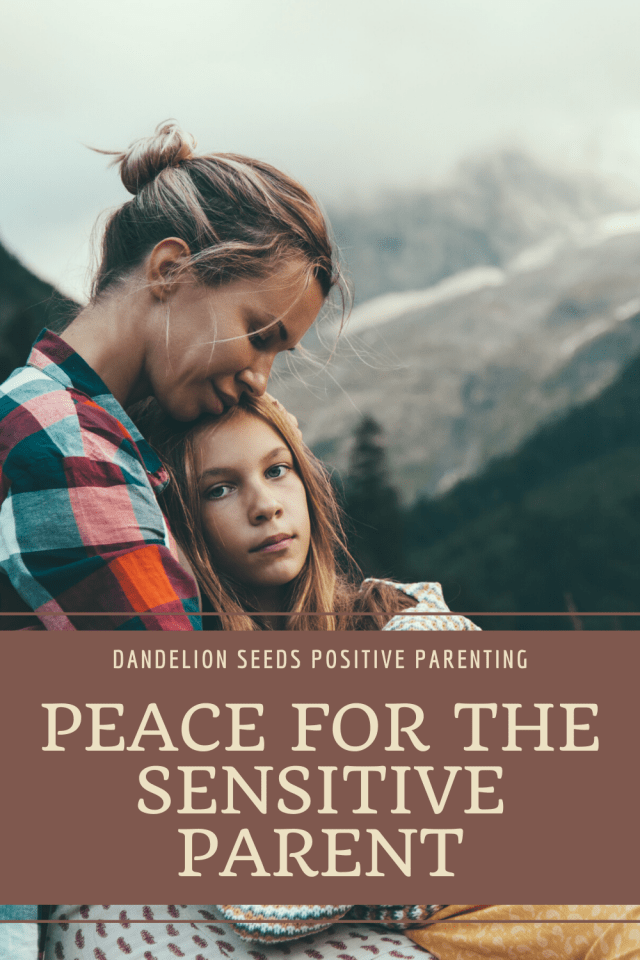
In short, MRIs show that the HSP has a nervous system that works differently than that of the other 75 to 80 percent of the population. However, HSP traits don't necessarily manifest the same across the remaining 15 to 20 percent of the population that we comprise.
What science does demonstrate across the board for the HSP, however, is that our MRIs show distinctly different areas of brain activity versus non-HSPs in response to the same stimuli. Specifically, the MRIs show "stronger activation of brain regions involved in awareness, empathy, and self-other processing" (source).
As a result, HSPs can experience the same events entirely differently from non-HSPs. And empathic HSPs take their innate sensitivity a notch farther.
That said, there are a couple of concepts worth noting before addressing parenting strategies: "Highly sensitive people are typically introverts, while empaths can be introverts or extroverts (although most are introverts). Empaths share a highly sensitive person's love of nature and quiet environments, their desire to help others, and their rich inner life." (source)
We can use what we know to our advantage.
While mainstream parenting is, well, mainstream, we simply aren't. Therefore, we can't expect that standard parenting strategies would work well for us. If we try to fit into a certain "box" that doesn't reflect our sensitive nature, parenting might feel harder than it has to be.
Some of these ideas can lighten your load.
Many of us have what feels like a whole lot of extra neurons dedicated to empathy. And HSPs, following a standard rote of discipline that leaves us feeling disconnected from our children simply isn't a good fit.
Parent gently. This includes "parenting" yourself, too. Be kind to yourself and keep your inner (and outer) voice in check.
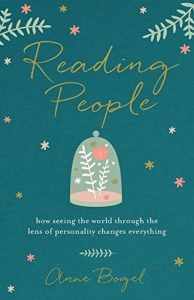
If HSP parents treat our children harshly, many of us will internalize the punishment and feel it ourselves on some level. If our parents were harsh with us or ignored our big feelings and we have emotional memories of that, we'll feel those feelings all over again as we administer them in our own homes. That doesn't feel good.
Of course, children do need loving limits. With practice, we can hold those loving limits compassionately with our children while also healing your own inner child.
If you're new to gentle parenting or want to learn about it in ways that support the information in the books, many positive parenting groups exist to support you. Support from likeminded parents can help you navigate to a gentler way of being.
Release the pressure to discipline the way our parents did, or our peers did, or the way some outdated parenting book said we should.
Trust your sensitivity to be your ally and your guide.
We all know we can't pour from an empty cup. We'd like to be able to take care of ourselves first. However, some HSPs find it challenging to find parenting strategies that balance self-care and our tendency to put others first.
For me, taking care of myself first just wasn't always my reality. When my child was very little, I couldn't just let her cry and "figure it out," no matter how exhausted I was. Despite the well-meaning (albeit unsolicited) advice from others, I let my heart lead my parenting.
I'd felt better if I'd parented lovingly and while being emotionally present for my child day and night.
Does that mean that I just abandoned my needs, though? Absolutely not. Something that worked really well for my family included reducing screen time and replacing it with story time. We also instituted screen-free days with unexpectedly positive results. That wouldn't work for everyone, of course, but I knew I needed my quiet time to recharge.
So, I created the best of both worlds: quiet and clutter-free areas around the house where I could go to read with (or near) her while still staying emotionally present.
I also made mornings our standard time to get out of the house. That way, I knew I could come home and everything would be quieter from that point forward in our day. Afternoons became a predictably sacred space for us.
"Home days" earned just as much priority as other appointments. I consciously worked to find the patience for positive parenting, knowing that practice would make our inner lives more peaceful. If I couldn't "go" to self-care, I brought peace to meet me where I was.
Many HSPs grew up keenly aware of their sensitivities to sounds, bright lights, and overly gregarious people. Whatever external stimuli triggered you before having kids, they're likely still there, along with the responsibility to raise children despite them. And in many cases, kids are all the noise, lights, and excitement wrapped up into little human-sized packages of energy. That's standard child behavior.
That said, this is in no way a knock on children. They're perfectly good at being exactly who they were designed to be, lights and all. Life moves on, as they say, but becoming a parent doesn't mean you're not yourself anymore. Suddenly, you're responsible for raising a human who might challenge all of your HSP-ness.
Remember how you grounded yourself before you had children. What's something you haven't done in so long that you've nearly forgotten about it, but that helped you find peace?
Consider journaling as a way to reconnect with yourself. It's proven to be a solid and reliable way to express

our own big feelings and working through them peacefully (source).
If you have an understanding partner, share your heart with them. A friend or a counselor can be a wonderful resource for an HSP, as well.
If you don't have a good circle of friends, create your community -- start somewhere. If you lack childcare or the desire to leave the house, connecting virtually can still lift you up. A video or phone chat with a faraway friend does wonders for refueling the emotional tank.
Within certain parameters, even social media can offer some benefits specifically for introverts, including the HSP. Connecting with other adults is easy to overlook because many don't consider it a "parenting strategy." However, connection is critical to our emotional wellbeing.
Connection, in turn, contributes to the emotional fuel we have on reserve for the challenging parenting days---and for all of the regular days, too. If social media starts to creep in too intrusively and negatively affect your relationships, however, know that there are many things you can do to keep your screen time in check.
Finally, not all connection needs to be with people. Connect spiritually. Connect with nature, too -- science shows how beneficial it can be for grounding ourselves (source).
Rather than trying to fit into a mainstream mould that wasn't built for us in the first place, we get to create our own parenting strategies that honor who we are. We can create an approach that  leaves us feeling encouraged and connected, even despite all the ways that parenting stretches us and pushes our boundaries.
leaves us feeling encouraged and connected, even despite all the ways that parenting stretches us and pushes our boundaries.
With the natural bigheartedness of HSPs, our children will fare better when we embrace that which comes naturally to us. There's always room for more compassion in the world.
There are a few really detailed and exceptionally good books to study, such as The Highly Sensitive Person by Elaine Aron, PhD, and Reading People by Anne Bogel (the latter is only a chapter, but it's entirely relevant). I 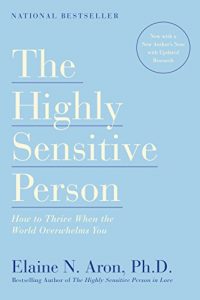 recommend them to HSPs who want to understand themselves better. They're also beneficial to non-HSPs who want to understand us better.
recommend them to HSPs who want to understand themselves better. They're also beneficial to non-HSPs who want to understand us better.
You can watch a movie about highly sensitive people. You can even take a online quizzes to gauge whether you're a likely an HSP. If you've read this far, though, you probably already know the answer.
I didn't need a quiz or an HSP "label" to understand my own wiring, but it didn't hurt to know what to call it so that I could research beneficial parenting strategies more effectively.
With or without a quiz, if you understand yourself to be an HSP and want parenting strategies that support you, check back here for more resources soon -- including an online session dedicated to parenting a highly sensitive child.
When my daughter was three years old, I didn't think anything about fostering childhood resilience when it came to Halloween. For some reason that's unbeknownst to me, she decided that what people do with Halloween candy is...donate it. Who was I to argue with her thoughtful idea? So, for the past two years, we've gathered up her loot and handed it off to a grateful recipient.
I somehow assumed that this is what she'd want to do with it forever. Yeah, just call me naive and we'll get on with things, shall we? In any case, we started Halloween today with our standard plan to donate her candy. She was completely on board.
So, off we went to our downtown "Safe Halloween" where local businesses open their doors to the kids and their parents for a couple of hours, doling out all the good stuff. Now, what makes the "good stuff" tricky for us is that my kiddo has food allergies, so donating her candy has always eliminated any risk to her safety. The Teal Pumpkin Project helps somewhat, but not everyone knows about it or chooses to participate.
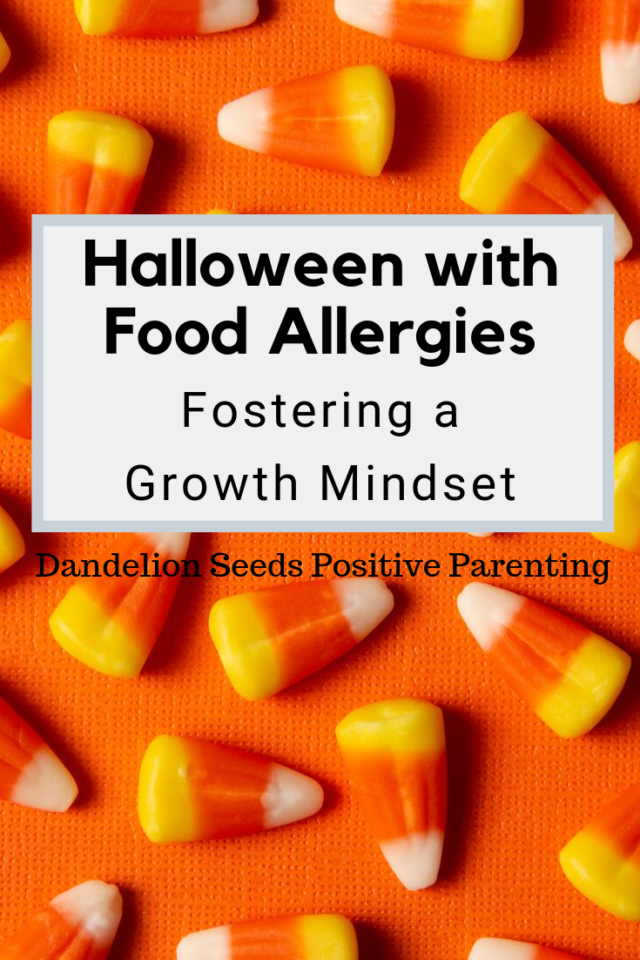
When we were done trick-or-treating, however, she crawled into the backseat of my car, opened her big paper bag, and took a quick whiff of the contents of the sugar-filled booty. I glanced back at her after another minute, and although her hands were still on the outside, her head had disappeared almost entirely into the bag. It smelled good. That's when I started to realize that this year might be
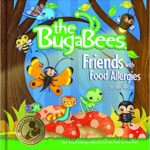
different. She might not want to donate the good smells.
When we got home, she inquired while holding up one of her goodies, "Mommy, can you please read the ingredients to this one?" Suddenly, I realized we were on a very slippery slope. What had been an easy fix to a problem wasn't going to work this year. Since reading The Bugabees (which I love for kids with food allergies), she's learned to ask what's in the food to which she's exposed. (Afflink) That's wonderful.
For better or worse, however, most commercial candies simply aren't options for her health-wise. To compensate for that, we have alternate "safe" treats at our house, usually healthy options. She'd broken off a square of dark chocolate during lunch at home just a few hours earlier as a special treat.
With all that in mind, I read the ingredients. She quickly self-identified that the candy she chose wouldn't work for her. And then she mourned.

Empathizing, I told her, "I saw how much you really wanted that candy. The feelings I'm guessing you have right now are disappointment and sadness. You can tell me if I'm wrong." It helps kids to give names to feelings to help build emotional intelligence. Dr. John Gottman writes about this, along with a lot of other really insightful suggestions, in this book. It's best when children can name the emotions themselves, but that doesn't always work when they're emotionally flooded. She agreed that I'd guessed correctly.
After holding her and telling her I understood (truly, I do), I realized that this would be another teachable moment. I had to wait, of course, until her brain could find logic and reason, as this important book by Drs. Seigel and Bryson so clearly illustrates. One of the lessons I've learned, though, is that she learns best
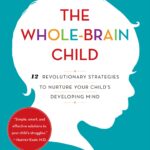
when I give her the space to solve problems for herself--while I fully support her emotionally along the way. This is a life skill she needs.
Knowing the rest of her loot would be similar, I offered, "I wonder what we could do to make the rest of the candy less tempting. Let's think about this." And then I waited, just a bit longer than where I felt comfortable. It's usually in that uncomfortable moment when she suggests something.
"I have an idea, Mommy."
"What is it?"
"Let's make it a science experiment. You grab a bowl and put some hot water in it; I'll put the candy in it and see what happens."
We proceeded to make a warm, gooey, good-smelling experiment while sitting in the middle of our kitchen floor. I hadn't thought of the idea. She had. And when she did, she bought in completely. We marveled at which ones floated or sank, and which ones bubbled (I'm never eating that kind again). She solved the problem in a way that will undoubtedly stay with her much longer than anything I'd have suggested, would have. And I believe she learned something about her own resilience.
Although I don't know if this candy-plan will work again next year, what I do know is this: she's capable of figuring it out. She's strong. I love that she has opportunities to see this.
_______________________________________________________
Click the images for details!






In positive parenting, the power of a hug is some of the best preventative medicine that exists for the adult-child relationship, even with children who aren’t our own.
A girl I'll call Juniper, who was then two and a half years old, was standing with my child and me in the doorway just before we joined Teacher Tom for outdoor story time. It was the very first time I'd ever met her. I was the last adult chaperoning kids out of the building, so I couldn't join story time with my child until I was sure all the kids were accounted for. Juniper had no intention of joining us, though, as I could clearly see from her body language. As Teacher Tom noticed my child and me waiting in the vestibule, he beckoned for us to join him. A lot of people were waiting for us. He was unaware that I was encouraging Juniper, who was cowering in a corner, to follow us.
In an attempt to connect with Juniper, I crouched down to her level and reached out my hand. I'd have held her hand, hugged her, or picked her up, if she'd indicated any of those options were acceptable. To my surprise, however, she jumped at me like a mini-superhero, then started throwing punches and kicking me. She tried to bite my arm. Holy moly.
Despite being momentarily stunned, I heard myself think, "I'm going to Janet Lansbury this." (I didn't know Janet was a verb. I always thought she was an early childhood expert.) As calmly as I could muster despite Juniper's flailing limbs, I held her shoulders at a safe distance from my body. I looked her in the eye and said, "I won't let you hurt me. I'll help you through this." Immediately, she calmed, took a final halfhearted swing at me, and took off running down the hallway of the building. Knowing I couldn't leave a child alone in there, I invited my child to follow me as I gently pursued Juniper. I gave her plenty of space.
To be clear, I use positive discipline as a synonym for teaching. I don't support force or punishment of any kind as a parenting approach. In my experience, a hug and almost any form of positive parenting go so much farther than anything punitive.
Before I continue with what happened, it’s helpful to understand some of the different approaches I could’ve taken, based on different parenting styles. This child didn’t need to be mine for the same neuroscience to apply.
If I acted like an authoritarian parent, it likely would've presented as me yelling after her, catching her, and picking her up against her will. Flailing or not, I'd plop her down into to story time. Traditional authoritarian parenting (the most commonly punitive option) centers around adults controlling children. It has negative long-term consequences for the parent and child relationship, as well as for the child

herself, as John Gottman, Ph.D. describes in Raising an Emotionally Intelligent Child (afflinks). Forced compliance does nothing to support children’s emotional intelligence or attachment to their caregivers, and I certainly wasn't going to make this little stranger "behave" somehow.
On the opposite end of the parenting style continuum from authoritarian parenting is permissive parenting. However, Dr. Gottman, Janet Lansbury, and many other experts caution that permissive parenting isn't the antidote to authoritarian parenting. It, too, carries risks for the child. Children need loving and reasonable limits to feel secure. Permissive parenting might’ve looked like my letting Juniper run wherever she wanted, and not saying a word to her about it.
Neither approach would've given Juniper helpful tools upon which to rely in the future. Moreover, if she happened to be a highly sensitive child (HSC), odds are good that anything punitive might have sent her into an even tougher emotional situation.
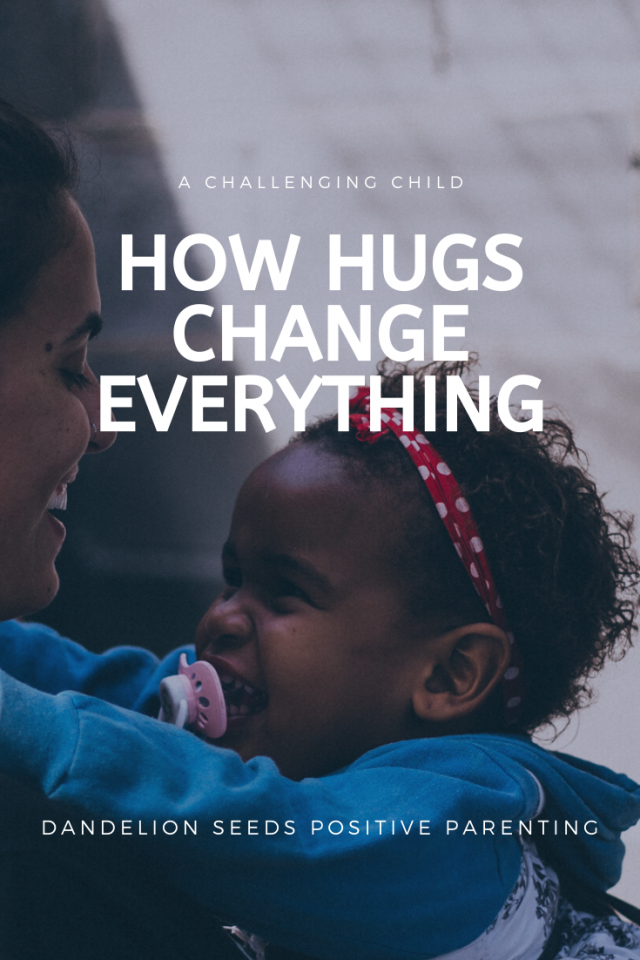
This balanced type of positive parenting is called authoritative parenting. Note that although the name authoritarian parenting, which is negative, sounds like authoritative parenting, the latter is positive.
In any case, this certainly wasn't the time for a sticker chart or a "red behavior card,” which is common in many preschools. (I'd argue that no time is right for those, but that's another post.) As Ross Greene, Ph.D., argues in The Explosive Child, "...The reason reward and punishment strategies haven't helped is because they won't teach your child skills he's lacking or solve the problems that are contributing to
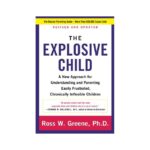
challenging episodes..." These methods don't teach children how to cope when they're emotionally overloaded.
Conversely, positive parenting is linked with better long-term outcomes for the child. This is true not only short-term, but also for the child's long-term wellbeing (1). Examples of positive parenting styles include RIE® (2), attachment parenting, authoritative parenting, and many others. Descriptions are readily available on the Internet, and my website has a list of my favorite positive parenting books. (Yep, I've read everything there. I share only the ones that have solid, actionable messages and that promote positive parenting.) I wish I had a dollar for every style of parenting in the dictionary these days, but truthfully, the names don't matter much.
All that said, I wasn't entirely enthusiastic about pursuing this small Mike Tyson. However, I realized that this responsibility was on me even if I didn't sign up for it.
I trusted that I was there for a reason. I needed to find that middle ground that would help Juniper trust that I was on her side while still accomplishing what we needed to do: reconnect with the class.
So, I offered her a hug. Totally bewildered for a moment, she yelled, "No!" And then she sucked her thumb, rocked herself, fell to the floor crying, and then got up and ran at me again. For a moment, I almost blocked my body for safety. I saw something different in her eyes, though, so I stayed within reach. She ran to me as if I were a long lost friend and collapsed into my arms, bawling her little eyes out.
She hugged and hugged and hugged, leaving my daughter and me surprised, but on we went hugging. Her tension melted away entirely. We proceeded to story time peacefully.
At that point and for reasons unbeknownst to me at the time, I told her that I have a "hug button" on my shoulder. Anytime she'd need one, she could come and touch my shoulder, and I'd know what to do. I made sure to always crouch down when she came near, just in case she needed to push it.
If any child were to put something unsafe in her mouth and start running down the hill on the playground, it was her. With some false starts, I learned that following her and asking her to remove the choking hazard would backfire. It was all the convincing she needed to keep the aforementioned item there. When I pushed too hard or sounded forceful, fearing for her safety, she’d take off running and create an even greater safety risk to herself.
Once I realized that, I chose to address her potential issues proactively. The moment I saw her put something in her mouth, I'd crouch down and call her name from wherever I was on the playground. I'd stay put. She'd look over, and I'd point to the invisible hug button on my shoulder.
More often than not, she'd nod and come running my direction (sometimes with the aforementioned object still in her mouth, but it was progress). She'd hug me for as long as she needed and then relinquish the item.
Except for when she didn't come. I'm not perfect (more like a million miles from it), and sometimes my tone would be too worrisome for her. Or sometimes I'd think I'd done it "right," but she was too emotionally overloaded to connect.
I lost count of how many times a proactive hug completely deescalated potential problems. I'd see a "look" on her face that signaled trouble, so I'd offer a hug. And just like magic, all was right with her world again. Some of the other kids in class even joined in on the “hug button” initiative.
On the last day of class, Juniper walked up to me and offered me a hug for the first time, proactively. She'd never done that before. I happily accepted. Much to my surprise, she cupped my face in her little hands and she whispered, "I love you." It was the perfect 2.5-year-old translation of "Thank you for understanding exactly what I needed when I didn't have the words to explain it."
And I love her, too, in the most wonderful way of loving a small person I'll likely never see again. She helped show me the power of positive parenting from a lens outside that of my own family. She reinforced that it's better not to chase my child; but instead, to be rock solid and a "safe place" emotionally. She confirmed what the the gentle parenting books say should happen when a child feels connected. My own parenting is better for the important positive parenting lesson she taught me.
There's a lot to be said for the power of a hug.
_____________________________________________________________
Source (1): https://www.parentingscience.com/authoritative-parenting-style.html
Source (2): https://www.rie.org/educaring/ries-basic-principles/
I recall one afternoon shortly after my own daughter turned two. She looked at me and announced ever so confidently, "Park. No pants." Hold the phone---when did she learn to say "park?" And was she actually

requesting to go there without any pants on? (She was. We went; her, without pants, and me, fully clothed. It was warm. No one batted an eye.) I realized at that moment that the baby I'd just figured out, suddenly wasn't that person anymore. She was evolving before my eyes.
So, true. We do need to adjust our parenting at this milestone age.
Whereas before we had a child who was likely happy to be carried much of the time, we now have someone who wants to walk. (And by walk, I mean sprint precariously forward, and usually with turbo speed when stairs or vehicles are present.) Suddenly, we need to sprint after a fully functioning human body, and that's new to us.
Whereas before we could talk to our little person and he'd smile or babble in response, we now have someone who's forging his own opinions about things. Suddenly, we need to navigate a new opinion in the house, and that's new to us.
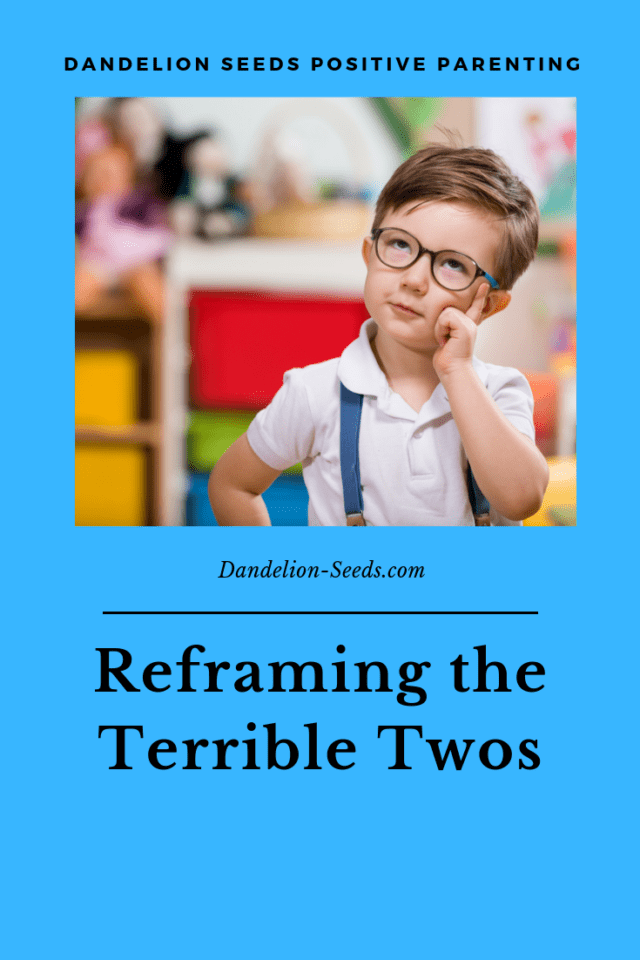
The human brain will never again grow as fast as it's growing right now in these first few years of childhood. As much as it is for us---the adults---to process, it's even more overwhelming for the little people to whom this "growing up" thing is happening. Sometimes, it manifests in what adults perceive as suboptimal behavior, such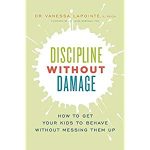 as tantrums.
as tantrums.
One important thing to note is that throwing a tantrum isn't about disobedience; it's a little one's way of saying, "This is pretty overwhelming right now! Can you please support me?" Unfortunately, two year olds often lack the verbal skills, not to mention the development in the prefrontal cortex (the part of the brain that controls impulses) to help them do anything other than exactly what they're doing. Some quick brain science: the prefrontal cortex doesn't fully develop until around age 25.
I realize that when a child throws a temper tantrum at the grocery store or on the playground, it's inconvenient. Sometimes, it's downright embarrassing. If situations like that irk you, please know you're not alone. Remain calm; practice deep breathing.
If I had a single piece of advice around your child's big feelings, I'd suggest that you let go completely about what other people think and simply connect to your child. This connection is going to get you through age two, and all of the other years that follow. Now is a great time to practice.
And here's the crazy thing---most "terrible twos" spend very little time upset. In my personal and professional experience, two year olds are incredibly delightful most of the time. The amount of time they spend being curious, giggly, and affectionate far outweighs anything else.

Surprise people with your ability to see the joy at your child's newfound mobility and freedom, because it's new to him. We can learn to run faster.
Surprise people with your gentle support of your child's awesome new ways to show you "This is who I am and what I like," because advocating for herself is new to her. (And how freeing it must be to clearly know your boundaries like little kids do. What a gift they have this way!) We can learn to help our child navigate communication.
Surprise people with your flexibility around forced sleep times; we all sleep when we're tired enough, and this incredible desire to play with you every waking hour is new to your child, too. We can learn to adapt.
Part of respectful parenting means we learn to work with the child in front of us, even when it requires that we, ourselves, grow in our abilities. Additionally, it means we're intentional about the ways we describe our children to others. Our words matter and our kids are listening. Do we like them? Do we want to foster a positive connection based on mutual trust? As parents, we're called not only to be kind to them, but also to reflect that kindness in the words we use about them.
When someone mentions the "terrible twos" to me, I often reply with a shrug and respond, "Huh. I've always called them the 'terrific twos.'" 'Nuff said. One person at a time, we can change perception---because after all, our perception is our reality, isn't it?
Your two-year-old child is wonderfully fine, and more often than not, perfectly terrific.
In the dance class I’ve written about before and that I help teach, the kids sometimes use colorful scarves as props during freestyle dancing. It’s really fun to watch them swirl and twirl, unless you’re watching littlest Julianne*, where you wonder how long it’ll take her to accidentally wrap up her feet and wipe out. The less fun part, however, is handing out the orange, yellow, green, red, blue, and purple scarves before the dancing begins. Almost all the kids are fine with any color, but a few want only purple. There aren’t enough purple scarves to go around, nor can two kids share the same scarf at the same time. When kids want the same thing, dance class quickly morphs into a crash course in economics, whereby some struggle with supply and demand. Scarcity makes the heart grow fonder.
When I hand out the scarves, it works best when I’m playful about it. I reach into the bag as if it were a magic hat full of rabbits. I act shocked and amazed each time a new color comes out, much to the delight of the kids. They get caught up enough in the game that they’re usually unconcerned with what color they get. If someone does get upset, some sincere active listening and empathy usually help them process and move on quickly. “Yes, I see how much you wanted the purple. You feel disappointed.” The child invariably affirms that I’ve understood correctly and then moves on with her dancing. If she’s still upset, although it rarely happens, she can process as long as she needs to.
I just don’t buy it. Maybe it’ll be an issue for some. But most of the time, it’s really not a big deal to them, at least not for age four (or so) and above. Many kids already have the emotional intelligence to delay gratification. They already know from their life experience that they’re likely to get a turn with the purple scarf, or whatever the object of their affection may be, at some point.
And most of them know exactly what to do about it if they want the same thing that another child has. The adults around them model sharing and taking turns every day, and like everything else, kids pick up on what they observe. Learning to share happens naturally in its own time.
Case in point: After I’d handed out the scarves one day, Amelia, who’s one of the youngest in the group of 4-8 year olds, requested for my attention. The music and dancing had already started. At her request, though, I kneeled down so she could whisper in my ear. She inquired politely, “I noticed that Josie has a purple scarf. I’d really like to take a turn with it. May I ask her if she’d trade with me?”
Absolutely, yes.
Josie was just beyond my earshot, but I watched Amelia walk up to her and engage her in a quick and friendly exchange. I watched Josie smile and nod. The girls traded scarves; one smiling because she’d gotten the color she wanted, and the other smiling because she got to help a friend. They worked it out. She shared. Happily. Easily.
I’ve seen this negotiation of “sharing” happen just as often with boys as girls; in dance class and on playgrounds. I could’ve just as easily written this piece about a group of boys working together to build a skeleton from individual x-ray images during science class a few weeks ago. However, it’s less desirable to write about yanking on femurs.
When kids want the same thing at the same time, they can usually work it out. Adults don’t need to interfere. We can trust them to negotiate for themselves, often without any mediation. We don’t need to worry that we’re setting a bad precedent if we give a child something he or she requests.
We don’t need to force so-called sharing or taking turns. Children do it quite naturally most of the time. Policing is far less important than giving them the chance to practice. And when better to practice than in childhood?
* Names changed for privacy.
"Mommy, let's pretend this isn't a train tunnel."
"Okay, what is it?"
"It's a tomb."
Well, hello, conversation stopper. She paused for effect, which is a good thing, because I certainly didn't expect that. After a moment to process and very consciously trust that children's play serves an important purpose for them, I mentally cringed while inquiring, "Is anyone in there?"
"Yep, a dead person."
She smiled lovingly at me, just content to be playing.
I have to admit that this already wasn't my favorite game, and although I didn't know who was inside, I was hoping for some miraculous resurrection of sorts.
"Was it anyone we know?"
"Nope, it's not. It's just some man. He's dead in there."
Well, at least it's no imaginary person we know. Somehow that made it better for me, the adult who should be able to handle a child's imagination.
Still, I waited for the punchline and trusting her play, looking for some clue as to where this was going.
"What happened to him?" I asked tentatively.
"A cow sat on him. And then a car drove on top of the cow."
Well, that would certainly do it. Although she knows bodies stop working when someone dies, we haven't spent much time discussing the specific mechanics of the process.
Then, she added, "Yeah, he was really, really old, like Grandpa Herb."
Click. Now, I see what's happening. Grandpa Herb is actually my grandfather; her great grandfather. As I write this, he's a 95-year-old with a body that's more ready to go than his brain is.
I reminded her that Grandpa Herb is still alive, but she proceeded me to remind me that he's "really, really old and probably won't live much longer."
He might have another decade ahead of him, but he might not. She's bright enough (as kids are) to pick up on pieces of the adult conversations to know that we talk about his life and medical situations differently than we do others'.
Just like we do as adults, kids need to process when change is coming; especially when it's such an abstract concept as this (for all of us). We rarely discuss death with children unless it's necessary, so it's particularly foreign to them when it happens. We can read helpful books like this one and this one (afflinks) to help cover the bases. I can trust that her play is helping her process just as she needs to. And she can ask all the questions she wants to, and I'll do my best to answer them according to our belief system. Of course, I can't tell her what dying is like, though, because it's never happened to me.
So, until then, we find ways to make peace with the unknown. We need to somehow make the intangible, tangible. We need to know that when the time comes, we'll have done something to prepare, because we all want to do something.
Some might call this "game" macabre and make that resurrection manifest somehow, or insist that it's a train tunnel and nothing more. For us, it became a way to process and discuss one of life's Big Topics, using the means my child knows best: learning through play. It's within her power to play; the more she can process it in her own terms without me imposing my agenda on her, the more she can begin to grasp and reconcile the concept. And the more she can be ready for the inevitable, be it for Grandpa Herb or for a goldfish, the less jarring it will be for this child.
Personally, I'm going to beware of sitting cows for awhile. More than that, however, I'll continue to trust that play needs to happen, exactly as it is.
Knowing her grandparents will soon be asking for gift ideas for our daughter, my husband and I decided to take our five year old window shopping today. As usual and as I've written about before, we began with the caveat that although we wouldn't buy anything, we'd take pictures of what she likes so that we're sure to remember. This approach has pretty much been golden for us since she was two, and learning to delay gratification has contributed well to her growth mindset.
Today, however, she was really short on sleep. Even for me, an adult, a lack of sleep thwarts even the very best laid plans. Still, we pursued our endeavor to leave the house.
Upon entering the store, our child uncharacteristically said, "I've decided we're not just going to look at toys. We're going to buy some for me today to take home." I gently and clearly reminded her of our mission. And I hoped for the best.
We made it past the greeting card aisle and into the craft aisle. On display with the crafts, they were selling a sewing machine for kids. She picked it up and announced, "This is what we're buying for me today. Let's go check out now."
I wish I had a dime for every time I'd seen a parent in a similar predicament. I'd be able to buy a thousand sewing machines. Regardless, this was really unlike her.
I acknowledged how much she wanted it and reminded her that we'd put it on her list. I took a picture of it, and for good measure, so did my husband.
She announced that she would carry it through the store with us until it was time to check out, and then we'd buy it. I let her know that she'd be welcome to carry it through the store, but that we'd put it back on the shelf before leaving. Setting expectations upfront usually does wonders for keeping things mutually agreeable. However, the "mutually" wasn't happening here today. So, I presented it as a loving limit and took the time to discuss and validate how she felt.
Sure enough, she chose to carry it through the store, anyway. She had no interest in looking at any other toys. We stopped to look at some decorations and at a few items for my husband, but that was it. She wanted to go no farther, though, so we returned to the craft aisle, the sewing machine still firmly in her grip.
We had nowhere else to be, so we did a bit of emotion coaching to help her. However, it was still a no-go for her. She said she'd wait there "forever" until we bought it. Taking it from her forcefully would do nothing for her emotional intelligence, our connection, or her growth mindset. So we waited, letting her feelings be what they were, and trusting that this was temporary.
After awhile, I asked her to think of a way she'd be willing to leave it at the store. Because she wasn't in an emotional place to think logically right then, I offered her the options of either putting it back right away or walking toward the exit while she held onto it, until we reached the checkout area. At that point, her option would be to hand it to my husband to put back before we reached the door. She chose the latter. And for whatever reason, she quickly put the sewing machine back on the shelf where it belonged. However, she grabbed a unicorn craft that was nearby and held onto it just as steadfastly.
However, near the checkout area, she changed her mind and wouldn't relinquish it. At that point, I shared a story with her about a time when I was little and didn't get a toy I wanted. Her demeanor changed. She softened. For the first time in awhile, she looked me in the eyes and connected. She felt understood.
Shortly thereafter, she offered, "I don't want to put it back on the shelf. I want to put it somewhere...else."
I replied, "It's too hard to take it back to the craft aisle. You want to put it somewhere different."
"Yes. I want to hide it and see if Daddy can find it."
Fortunately, because she's five, her hiding places often include instructions such as, "Please don't look behind the chair."
She looked resolved, proud of having solved the problem herself. All she needed was the time and emotional support to do it. So, off we set on a short mission to find the perfect hiding place for it. After testing a few options, she settled on setting it between the feet of a mannequin. She promptly informed her Daddy not to look there. (Daddy, of course, returned it to its proper place once we were out of sight, and she confirmed later that it was exactly what she'd wanted him to do.)
And off we went to the car; her, sad but accepting, growing in her ability to solve problems. Even among the shiny objects; even when sleep deprived, she found a way to do it that was mutually agreeable. We can both sleep well tonight.
Although I was on the other side of the playground when it started, I suspect the conversation began something like this: "Hey, let's see if you can throw the football so hard that it gets stuck in the tree!" Perhaps having never experienced the frustration of getting a ball stuck up high, this young boy saw an opportunity to try something new.
Most of us have wished for the lost moments of our life back when we were working to retrieve an irretrievable item. As a result, most of us have made an unwritten rule that we should never throw something up there intentionally.
But not this boy.
Fortunately, his muse (who happens to be his teacher) is often game for challenging long-held beliefs--especially the ones that adults have imposed on kids, often without good reason. Rules for rules' sake, you know. "The way we've always done things."
By the time I arrived, they were drawing a crowd. We watched our impromptu quarterback throw the ball upwards toward the high branches. It's amazing how hard it is to get a ball to stick in a tree the one time you want it to stay there!
With some effort, but not too much, he threw the ball high enough. And it stuck, way up there. Right where the boy wanted it. Everyone rejoiced in the victory we all wanted.
We found joy in breaking a rule about how things "should" be. At least I did. It felt wonderful to do something differently than many would, just because we could. On some level, we found freedom in it.
We get to switch things up. We get to examine the rules we consciously hold because they've always been that way. Perhaps our parents raised us perfectly; gently; respectfully. It's good to emulate that in all the ways we can. Or perhaps they didn't, and now, with our own children, we can challenge our long-held beliefs about parenting. We get to break negative cycles. It's important to do that, too.
Sure, some rules make good sense; I'm not suggesting we throw our belongings into trees. Still, along with the rules we know we have, we can catch a glimpse of the ones we didn't even know we were holding. Maybe we reconsider a "truth" we have about discipline, boundaries, or the innate goodness of children.
In examining these things, we regain the same type of freedom that the boy unleashed for us by wanting the ball in the tree. We get to do things our way, even if they're different from what our parents and friends have done with their kids. We get to make our own rules, tossing out our parenting "shoulds" and replacing them with, "Sure, let's try that."
Having this freedom in parenting is not only a gift to our kids, but it's a gift to ourselves, too. Once we know the rules that don't serve our families well, we get to launch them as high and as far as we dare. And they can stick there, never returning.
There's incredible freedom in letting go.
Every week, I help teach a dance class. And every week for the past three months, six-year-old Lexi (not her real name) has had to be first in line when the children await their dance props (scarves and whatnot). When it's time to line up, she'll push other kids out of the way to get the prime spot. When she's dancing on stage and someone has a more desirable position than hers, she'll inch her way into the other dancer's space, slowly edging her out until she's right where she wants to be. Some of this can be very normal in child development. It's frustrating at times and certainly not how all kids develop, but normal for some children, nonetheless.
And up until last Monday, the kids in dance class had been finding ways to coexist with her without too much strife. I chalked it up to the world needing both leaders and followers. Some people are just a bit trickier than others.
Last week, however, Lexi was particularly rough when barreling over some of the other girls. This time, they didn't like it. And the more they tried to work with (and around her), the more determined she became.
Try as I might to stay patient and let them work it out, I was getting frustrated with this girl.
When I'm busy with a lot of kids, it's sometimes hard to remember that children usually know exactly what they need. They often know what would help remedy their undesirable behavior. Fortunately, I saw the struggling child in front of me, along with the opportunity to facilitate. So, I pulled her aside, hoping she'd take a shot at figuring out how to be fair to the other girls.
At first when I tapped her on the shoulder and asked her to leave the stage with me for a moment, she furrowed her brow and crossed her arms, clearly in a defensive posture. She followed me, and we sat side-by-side on a stair. Starting with a problem statement, I told her, "I'm seeing lots of sad faces on lots of girls today. It seems that many of them want to have a turn being first in line."
I continued, "I wonder what we could do to keep it fair for everyone. Let's talk about some ideas."
Observing a wave of relief wash over her when she realized I was engaging her peacefully, she replied, "Oh, I know! We could make a list of everyone's names and then take turns, going down the list, to see who goes first."
Smiling, I told her I thought that seemed really reasonable.
And then I promptly ruined the moment by saying something about the "need to be fair" in a way that she could have perceived as condescending, which was exactly the opposite of what I hoped to do. Grrr. I felt instant remorse, but it was too late.
She continued just as she had before, pushing and clamoring over others to be first.
I heard myself wonder more than once, "What in the world is going on with her?"
As I've written about before, expert Kelly Matthews of A Place for You Early Childhood Consulting suggests (and as she learned from her mentor, Deb Curtis), “Don’t get mad, get curious.”
I'm decent (not perfect, but decent) at "getting curious" when it's my own child, but I'd forgotten this sage advice in a busy room full of movement and noise. Fortunately, that wisdom returned to me while I still had another chance to try it.
I pulled Lexi aside again. Her demeanor wasn't much better than the first time I'd done it. I don't blame her. But I stated factually, "It seems like something is hard for you today. I'm here if you'd like to talk about it."
And this time, she sat me down on the stairs, girls moving all around us. She seemed oblivious to them. She proceeded to tell me how she "never" gets to be first for anything at home: she has an older brother, and "he's the meanest". In her words, he never lets her do anything, and her parents always side with him because he's older and "knows more." She reinforced how hard that is before adding that she was missing her Mom.
I sat quietly, listening.
She continued that her Mom has been gone for awhile, visiting her Grandma far away. And her Grandma is dying. And she doesn't really know what that means, but she knows she misses her Mom and doesn't know why she can't come home to be with her.
On she went, citing all her very real troubles. Suddenly it made perfect sense why she was acting out here in class.
Understanding children's behavior happens best when we connect with them. When she was done sharing her story, I simply nodded, said I understood, and asked if she'd like a hug. She said yes. And then she wanted another. After that, she ran off, back to the group, and then out the door as class was ending.
For the next week until class met again, I wondered about her.
And then it was class time again.
I said nothing. However, I made sure to smile and go out of my way to say I was glad to see her. She told me about her new loose tooth (it's her first one!).
I observed that every time the girls lined up at the wall, she put herself third in line. Always exactly third. She didn't push anyone or do anything that would cause a teacher to raise an eyebrow.
So, at the end of class, I tapped her on the shoulder and said, "Hey, I wanted to let you know I saw how hard you worked to keep class fair for everyone today. You let others go first. I see the effort you made. Thank you so much."
She smiled sincerely and added, "Yes, and I even offered my purple dancing scarf to another girl who I know likes purple, even though it's my favorite color!" She switched from smiling to all-out beaming, proud of herself. As she should be.
I get a lot of things wrong, but I do my best to assimilate what I've learned from other wise parents and teachers. I don't take credit for anything here--all I did was listen to Lexi. It's the simplest idea; the simplest way to connect. And as it turns out, that's exactly, and all, she needed.
*
Update: Three more weeks have passed. She runs up to me and says hello every time she sees me. Her tooth is still loose, and her cooperation in class continues to be stellar (with no prompting whatsoever). Connection works, friends. I'm so proud of her.
For the past week, I've attended a multi-age outdoor school led by Teacher Tom, who's hailed by parenting experts as one of the "world’s leading practitioners of 'democratic play-based' education."* If you haven't followed his blog or bought his book, you should, and if you can attend his class, even better. Although I exceed the age limit for his class (wait, I don't look 5?), the cooperative model mandates that I spend at least some time working there while my child attends. Since my child wants me to stay at school all the time and it's too far for me to drive home while she's in class, and because I like it there, I stay. All good.
If you know anything about him (or if you don't, now you will), it's that he spends a lot of time observing and engaging with the kids. As an observer myself, it's easy to see how this role suits him. But what does observing Teacher Tom have to do with gentle parenting? Nothing, directly. Besides, he doesn't fit the "gentle parent" poster image some people have in their heads. He's not all hugs and feel-goods. As far as I can tell, he doesn't even shave his face every day (isn't that in the rule book?). So, if he's not raising your kid (and he's not), what does he do that's so special or different that it warrants your attention? Here's what I've witnessed:
He "gets" them and speaks their language. On the first day of class, he picked up a tiara from the playground dirt (where most of the valuable jewels are kept) and put it on his head. A little girl pointed out that he was wearing it backwards. He fixed his error, and shortly thereafter, someone tried to yank it right off him. My adult brain assumed he'd relinquish it (adults are polite, right?), but instead, he respectfully claimed ownership of it and wouldn't share. He wasn't done with it yet.
Without any lecture or adult-infused words about taking turns, he ingratiated himself as one of their tribe by doing what many of them would've done. I wondered if his refusal would be off-putting to the kids, but instead, he'd built credibility. He taught fairness without having to "teach" a thing. Many of us fall victim to playing as adults play: borderline fun, but kind of hung up on enforcing rules. We manufacture "teachable moments" and do our best to stay clean. If building connection is your gentle parenting goal, just look at this guy and the way kids flock to him (I've dubbed the kids his Merry Band of Followers). We take ourselves far too seriously.
Teacher Tom reminds us that we have our kids' permission to act like actual kids.
Red cape or not, I've seen Teacher Tom leap over a tall play structure in a single bound and break up a heated altercation between young boys. To the extent that he plays like the kids do, he's also clearly in charge. He sets limits and holds them unapologetically. Fairly. Respectfully. He's firm without shaming or creating guilt. He corrects behavior immediately when he witnesses a transgression, and then like water off a proverbial duck's back, he goes on playing. There's no room for grudges. They're counterproductive. In following through with his limits without waffling, he builds yet another kind of credibility.
Kids know they can trust him to help when they need him. They don't wonder whether he's a reliable leader; they know he is. As gentle parents, it's easy to second-guess the limits we set in the tough moments and come off as wishy washy. However, no one thrives on shaky ground. Without sacrificing kindness, Teacher Tom reminds us that it's okay to be firm and direct. And then move on.
Teacher Tom challenged the kids to fill a large open canister on wheels, which was at the top of a small concrete hill, with water. Then, they'd experiment to see what would happen when they released it. The kids obliged, lugging bucketful after bucketful of water up, up, up to Teacher Tom, who was sitting most of the way up the hill. He emptied their buckets into it. Once it was finally full to the brim, Teacher Tom counted down for the Big Release. We all waited with eager anticipation. As quickly as the water-filled canister started picking up speed, it stopped just as suddenly,
 catching on something, and proceeding to launch aaalllllll the water directly onto him. He was drenched in dirty playground water. His response: "That. Was. Awesome." And he laughed from his belly, just as amused by the surprise ending as the rest of us. He instinctively saw the situation from the kids' point of view; there was nothing to reprimand. What a great reminder that we're teaching our kids how to react when things don't go as planned; what a great way to model resilience.
catching on something, and proceeding to launch aaalllllll the water directly onto him. He was drenched in dirty playground water. His response: "That. Was. Awesome." And he laughed from his belly, just as amused by the surprise ending as the rest of us. He instinctively saw the situation from the kids' point of view; there was nothing to reprimand. What a great reminder that we're teaching our kids how to react when things don't go as planned; what a great way to model resilience.
Before I met Teacher Tom, I didn't know whether to expect him to be some combination of Superman and Mary Poppins (would he wear the cape and have the magical flying umbrella?), or if I expected some Dad-Gone-Rogue-Who-Never-Left-The-Playground. What I observed, though, is that while he's kind of those things, he's foremost really quite human. And you know what, gentle parents? That's really what your kids need most—the ability to see you as a real, true, reliable, flawed, predictable, and regular person who, with any luck, continues to put kindness first.
_____________________________________________________________
To see all the child- parenting-, travel-, and cooking-related items that have stood the test of time in my house, including my favorite books, click here. As an Amazon Associate, I earn from qualifying purchases.